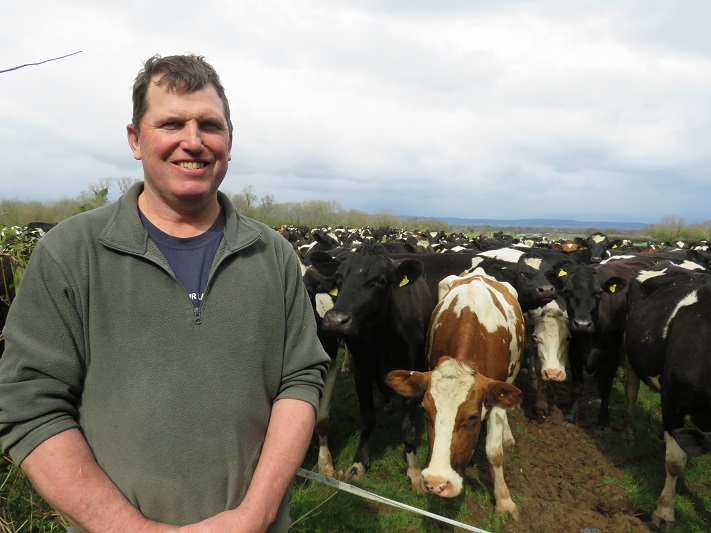Managing tight forage stocks
Megabite and Fortress have never let Derek Garrett down, even in last year’s difficult growing conditions
Derek Garrett runs 460 Jersey crossbred cows on an organic dairy unit at Park Hill Farm near Thornbury in Avon, on 950 acres of part-owned, part-rented land. The herd is split into 130 autumn calvers and 330 spring calvers, with the spring calvers milked once a day and the autumn calvers milked twice a day until the spring calvers start the following year. The autumn calvers are fed 4kg oats and 1.5kg soya until the springs start calving, but the spring calvers receive no concentrate feed at all. They are all kept in one herd.
The milk is sold to OMSCO and the milk has been certified antibiotic-free for the past three years.
Derek went organic in 2006 and has been running a New Zealand style grazing system for many years. The cows enter a paddock when there is 3,200kg DM/ha and graze it down tight to 1500kg DM/ha. They are given 12-hour breaks, giving the cows a regular fresh feed.
The cows have been out this year in the daytime since the end of February, although the dry winter has slowed grass growth well below normal.
“We would usually have 76cm of rain a year and we have had only 15 to 17cm all winter,” say Derek. “We are in the rain-shadow of South Wales – we can watch it raining over the River Severn and be totally dry here.”

The soils vary across the farm from sandy loam and some heavier clay. Grass seeds mixtures such as Megabite for grazing and Fortress for silage with white clover from Oliver Seeds have been used extensively with some fields now 14 years old and still performing.
“I tend to replace up to 20 hectares of the grazing block each year – ploughing in winter, spreading muck at 14t/ hectare and cultivating with a disc before distributing the seed using a harrow with a seed box above.
“I have always bought from Tony Walkers at Oliver Seeds since going down the milk from grazed grass route. My focus is producing milk from forage and these mixtures have never let me down. They are predominantly late perennial ryegrasses, with Timothy, festulolium and white clover.”
Difficult growing season
The late, cold spring last year kept the cows in at night-time until May – much later than usual, but once the warm weather came the grass grew very quickly – giving a large first cut of silage.
“We were lucky enough to have a lot of forage in stock from 2017 so we had more than enough to last the longer winter,” Derek explains. “We had a massive first cut but the second cut never came. After filling the clamp we usually make 1500 round bales – but last year made just 500.
“The clover thrived in the dry summer and we had 40 hectares of pure clover which we baled but didn’t wrap and fed out in a sacrifice paddock along with 300 tonnes of clamp silage, from mid June to mid August.
“During those eight weeks we lost 5 litres of milk a day per cow, but when the rain came the fresh grass that grew was of exceptional quality and we got three litres a day per cow back.
“The favourable autumn allowed us to keep the cows out a month longer than usual and the heifers stayed out grazing until Christmas Eve. We dried off some of the autumn calvers a month earlier than normal to allow more grass for the spring calvers.
“I also took the opportunity to sell 40 high cell count cows. I used their milk to rear beef calves for five months, saving on the cost of organic milk powder before selling the cows.
“The forage stocks are now low – with no round bales left and just 400 tonnes of clamp silage. It will be tight but we have our fingers crossed that it will rain and the grazing and silage fields will come away well. Last year was a real test but we managed by being flexible and adapting to the conditions.”
This article was first published in Farmers Guide, May 2019.
